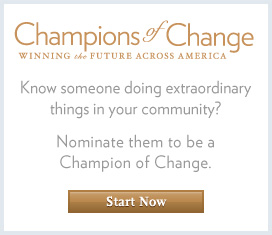Champions of Change Blog
Crossing the Line in the Sand: Why Early Exposure to Emerging Technologies Will Lead Our Students to Greatness
Posted by on August 12, 2013 at 3:08 PM EDT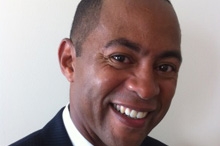
Jeffries Epps is being honored as a Champion of Change for his work to expand opportunities for young learners from communities historically underserved or underrepresented in tech fields.
For the past 21 years I have served the public schools of North Carolina in the area of technology implementation. As a systems engineer and now a technology director, I have worked in both a management and leadership capacity. From my engineering point of view I have witnessed technology change every two to three years. When I became a director I set my cross hairs on the skills we were teaching our students. Working with business leaders, administrators, teachers, and students has afforded me the opportunity to see how our efforts to prepare students directly affect the workplace. It is now my mission to ensure that the technology training inside of the school walls keeps pace with the needs of the global economy.
For two decades, technology in education has evolved rapidly. The rate of change outside of the school walls has not only altered the way we teach our students, but also how early we should expose them to emerging technologies. By exposing them early, and integrating science and mathematics at every grade level, they will have years to master these technologies as opposed to semesters. In addition, most companies will not entertain an engineer’s application unless they have seven verifiable years of exposure to the engineering process. So where can these applicants be found? They are currently in the 3rd grade!
In 1996, we began wiring schools for internet access. Students could access the internet from every classroom, media center, and computer lab. Since then, tools such as word processing, electronic presentations, and desktop publishing have become commonplace in our schools, homes, and the workplace. Students who were 3rd graders in 1996 graduated in 2005, however, they progressed into a workforce that had already been saturated with workers possessing the same skills. During this time, we drew a line in the sand that separated mediocrity and greatness. We sided with mediocrity. Yet, the workforce was demanding more highly-skilled, innovative workers.
Early exposure equips them to compete for current and future jobs, satisfy the seven year requirement and most importantly fail their way forward. When failure occurs, students often side with mediocrity. At this early stage they will learn that failure is a part of success and they persevere toward greatness. Greatness when their first line of code throws them a syntax error. Greatness when their first 3D scan does not align properly. Greatness when their first 3D object does not print as expected. Suddenly greatness is no longer a buzz word; it is now an attitude. This provides upward mobility. 3D technology will continue to evolve and these students will have the necessary knowledge, skill, and attitude to lead us into the future. By the time our 3rd graders graduate, they will be well-equipped to fill these jobs. The key is early exposure!
Somewhere along the way the real world component became someone else’s responsibility. As educators, it is our responsibility to take the time and make the connections between coursework and the real world. When students apply what they have learned to solve real world problems we pull them to the “greatness” side of the line and we dare them to go back!
In education, we stand on a great Genesis. We are redefining ourselves, and the way in which we do things. If we don’t get this right, generations will pay the consequences. If we are to lead the world, we must cast the vision of what the marketplace will be by teaching skills and thought processes that will be relevant well into the future. The end result is a highly skilled workforce that is prepared to compete globally. The United States will maintain its economic edge. Success does not follow mediocrity; success follows hard work and leads to greatness. Let’s start!
Jeffries Epps is the Director of Information Technology for Richmond County Schools in Hamlet, NC.
Learn more about TechnologyTech Inclusion for the Youths
Posted by on August 12, 2013 at 12:52 PM EDT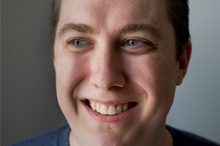
Kevin Mitchell is being honored as a Champion of Change for his work to expand opportunities for young learners from communities historically underserved or underrepresented in tech fields.
I was fortunate to be exposed to technology from an early age. In elementary school, I learned the foundations of programming through the “turtle graphics” programming language LOGO. My high school had an amazing computer science and technology program. I participated in the American Computer Science League programming competitions, and built and refurbished PCs for a local nonprofit. Throughout my education, I was exposed to a variety of hardware and software concepts that have given me a huge advantage in my career as a software engineer.
Unfortunately, many of the schools in our communities are not able to offer the same kind of technology education that was available to me. Currently, only ten percent of American schools offer a computer science program. Without fundamental computer literacy skills, today's students will struggle to compete in an increasingly computer dependent economy. Our country must act quickly to provide students with the learning opportunities necessary to develop this literacy.
That’s why I’ve taken on the role of lead volunteer at ScriptEd, a nonprofit that brings computer programming classes to schools in underserved communities. Our program works with local developers who volunteer by teaching classes, developing curriculum materials, and mentoring students. Our volunteers allow our students to see that a passion for technology can open up incredible opportunities, and provide them with the guidance they need to develop 21st century career skills.
We've seen a great amount of interest from developers in New York City who want to give back to the community through our program, and we are actively working to expand to additional schools and create a reusable open source curriculum. We recently ran a hackathon, an event where students spent an entire day working with technology professionals to design and develop programs around a central theme. We've also placed several of our students in paid internships at technology firms, providing them with real-world experience to help them be successful in a modern economy.
The teachers and mentors I had as a student helped to instill in me a passion for technology. I want to share this passion, and enable other professionals in the technology field to do the same. The feeling I get when I see a concept finally “click” in a student’s eyes is incredibly rewarding. We've seen our students go from being unable to type or create files, to writing programs that solve real-world problems and allow them to express their creativity.
I'm very proud of our students, and amazed by the enthusiasm of the volunteers who take time out of their busy schedules to teach and mentor them. Not only are we giving our students the skills they need for a bright future, we are also giving them a set of tools that will enable them to drive the future success of America.
Kevin Mitchell is a Lead Volunteer for ScriptEd.
Learn more about TechnologyDon't Tell Them It's Too Hard
Posted by on August 12, 2013 at 11:28 AM EDT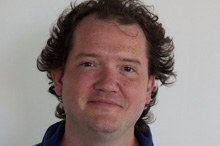
Carlos Bueno is being honored as a Champion of Change for his work to expand opportunities for young learners from communities historically underserved or underrepresented in tech fields.
Imagine leaving this world as complicated as you found it. To me, that's one of the scariest thoughts around. If the next generation takes just as long to learn what you've learned, they won't have time to do better. That's why good teachers don't merely replay knowledge. They try to distill it.
Three years ago I started writing "Lauren Ipsum", a children's novel about computer science and critical thinking. I wanted to write the introduction I wish I'd had as a child. My wife Yta and I looked for conceptsthat could be explained to a nine-year-old. We purposefully ignored how hard or easy they were supposed to be; that's what we were testing.
It's easy to forget that computer science is a very young field, and young fields are messy. As we race to generate new knowledge we also generate excess complexity and jargon, piled up around us like sawdust. When the hard stuff looks messy and complicated, and the easy stuff looks messy and complicated too, then you can't really tell the difference. That means, as teachers, we're not even starting in the right places.
Many things considered basic were much harder than expected. Other things with impressive-sounding names were literally child's play. It turns out that kids already understand cryptographic timing attacks; they just call it the game of Hangman. Most humbling was the number of things I failed to explain because I didn't really understand them.
People tend to think that scientific progress is all about discovering new facts. It's equally about discovering new ways to explain what we already know. Open a child's math book, and what do you see? Zero, negative numbers, pi. Every one of those "simple" facts was once the weirdest, hardest, most difficult concept in the world. Over the centuries we've come to grips with them. Today, we expect every child to know more math than Archimedes and more physics than Newton. That's progress.
We haven't made much of this kind of progress in computer science. If the mathematicians are the ones making fun of you for being too complicated, you know you've got some work to do.
Those experiments convinced me that a crucial part of computer science is training yourself to think clearly. You can't explain clearly unless you think clearly. And what is programming, if not explaining things to the computer? So as Lauren goes through her adventures she doesn't learn the messy incidental details of writing programs. She learns how to think like a programmer. She learns not just that she is responsible for her own decisions, she learns better ways to make them.
Today, "Lauren Ipsum" is used in classrooms all over the world in homeschools, elementary schools, and even universities. For every copy sold, we donate another copy to anyone who teaches children. To date we've mailed over 800 books to everywhere from Indiana to Indonesia. We're also about to publish a Spanish translation.
My favorite story is from a mother who had read the book to her children as a bedtime story. A few weeks later she was packing away some suitcases, nesting the smaller ones inside the larger ones. Her six-year-old watched for a while and said "Mommy, that's recursion!"
Take a few minutes to try an experiment. Pick something you know that is supposed to be complicated. Pretend you are talking to a child and try as hard as you can to truly understand and distill and explain it. Then try it out on an actual child. Tell them what you are doing and ask for help; work together to come to an understanding. It's astonishing what children can do if you don't tell them it's too hard. The odds are good you'll learn something too. And that's progress.
Carlos Bueno is an Engineer at Facebook.
Learn more about TechnologyFrom the Trenches: How I Attracted Over 300 Students to AP Computer Science and Got Myself Invited to the White House
Posted by on August 12, 2013 at 11:22 AM EDT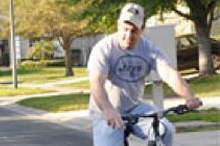
Seth Reichelson is being honored as a Champion of Change for his work to expand opportunities for young learners from communities historically underserved or underrepresented in tech fields.
From the White House to your house, I think we can all agree that we need to do a better of job of attracting students to computer science. We can see in our own communities that kids, especially girls, tend to lose interest in math and science as they grow older – and the evidence backs this up.
For example, 11 percent of the U.S. college-educated population worked in science, technology, engineering, or math (STEM) jobs as of 2009. Overall, there were almost four men for every woman in these STEM jobs. In particular, women were well-represented in the physical and life sciences (40%), but declined to only 27% of those working in the rewarding and high-opportunity fields of computer science or math.
Looking at the academic plans for first-year college students in 2010, only 1.5% of freshmen intended to major in computer science – far, far below the numbers needed to fill computing jobs.
Technology is everywhere: in our homes, cars, schools, airports, and pockets. But when it comes to technology, where are the girls? A good place to find them is in my classroom!
I started teaching at Lake Brantley High School three years ago, and had the opportunity to build an AP Computer Science program from scratch. To attract students who looked different from the classic computer science stereotype, I did many things differently: designed a course that was hands-on and fun; pitched it as one you could take with no prior experience; marketed to a broad cross-section of students, from cheerleaders and football players to the yearbook club and student government; and structured it with a “mastery learning” approach so that no one gets left behind. In making Computer Science more accessible and rewarding, I found that students – particularly girls – are more comfortable enrolling.
During my first year teaching at Lake Brantley my AP CS class went from 0 students to 60 students one week before school started. The second year it had grown to 144 students, 45% of whom were girls, and this year that numbered doubled again to more than 294 kids. Lake Brantley’s AP Computer Science program is one of the largest non-magnet computer science programs in the country, and its female participation exceeds the national College Board average by a significant margin.
For better or worse, kids today fear failure. So do their parents. Ninth grade parents want to know that enrolling their girls in computer science will not damage their confidence or hurt their GPAs. Kids don’t want to start high school with a class that is over their head, and be buried in work with no chance for an “A” grade. Implementing “Mastery Learning” eases their fears. Under this model, students are helped to master each learning unit before proceeding to a more advanced learning task.
I assure parents that if their child gets a bad grade I will call or email them and figure out what their kid needs to master, and then supply them with additional resources. Once the concept is mastered, I will change the student’s grade. Students build confidence while tackling advanced topics. Everybody wins.
Skill-building after school challenges such as IBM’s Master the Mainframe Contest, NCWIT’s Aspirations in Computing, Pleo robot outreaches, SECME, Zero Robotics, ACM Programming contests and whatever the students are interested in are great confidence booster for students. I seek out computer science competitions where there are no limits on the number of students that can participate in the contest and there is no luck involved. If you put in the hours, you will be successful. For example not many students can leave high school with main frame programming experience. Last year over 300 students from Lake Brantley are IBM mainframe masters.
So, my story is about one teacher’s methods gathered my many sources for helping kids find success and fulfillment in the sciences, but it can be replicated at any school near you. I tour the country with UVA’s Tapestry workshop training teachers on how to duplicate my success while collecting successful teacher’s ideas to make my program stronger every year.
No one can stop me…they can only hope to contain me.
Seth Reichelson is a Teacher at Lake Brantley High School.
Learn more about TechnologyCreating a Technology Spark
Posted by on August 12, 2013 at 10:43 AM EDT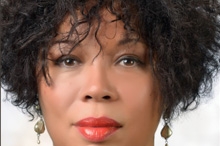
Deena Pierott is being honored as a Champion of Change for her work to expand opportunities for young learners from communities historically underserved or underrepresented in tech fields.
Deena Pierott challenges the status quo. She champions change and influences the course of events around her. During her decades-long career in the public and private sector, Deena consistently sought ways to be inclusive, remove exclusionary barriers, and insist upon full stakeholder engagement. Deena is a doer. She takes action, living by Tagore’s philosophy: “You cannot cross the sea merely by staring at the water.” Recognition of her efforts by the White House as a Champion of Change is fitting and validates her creative efforts and dedication to meet the needs of her community while promoting equity, diversity and inclusion.
Deena learned early that information is a powerful tool and that there are far too many that don’t have access - you don’t know what you don’t know – and in marginalized communities, what you don’t know can leave you behind. Deena creates bridges between marginalized youth and information. She enables access to Information about the broader world and how those youth can fit into it and thrive.
The promise of technology today and the dramatic impact it’s had on how we communicate and interact drives Deena to see opportunities for change and means for impacting the lives and careers of marginalized youth. However, young people of color and those who have been marginalized in various ways are not engaging with those thriving, specialized fields as career choices. Most tech-related opportunities are reserved for students who have already demonstrated promise and interest. In 2011, Deena started iUrban Teen Tech as a tool to provide empowering and inspiring programming that would steer these youth – especially the ones who are left out, overlooked and disengaged - into the fields of science, technology, engineering and mathematics (STEM). Her intended demographic is African American and Latino males, who are at the highest risk of dropping out of school in the Portland Metro area where Deena has built her program.
Since that time, more than 700 young people have experienced iUrban’s innovative programming known as iUrban Teen Tech. iUrban includes interactive workshops at tech summits that explore current technology trends and that expose students to leading speakers within various technologies. iUrban also sets up bi-monthly tours with local companies, allowing students to witness first-hand how technology is used and how it affects their daily lives. Industry tours include producers of animated video games, athletic footwear, cyber security, energy and many more. IUrban’s teen-led think tank also designs tech-based solutions for local community concerns and issues. These are then presented to public officials and business leaders.
What makes iUrban Teen Tech extra special is its community. It takes a village to support a child, and the iUrban village relies on all those stakeholders who have an interest in the success of these youth. Parents are at the center of that village, participating in summits, volunteering as chaperones on industry tours, and reinforcing the learning and exposure that students receive back in the household. iUrban also has the support of an impressive collection of leading regional CIOs through its STEM Industry Advisory Council. And, finally, universities, where as partners hosting programs on their campuses, they are able to excite student aspirations of one day going to college. Of course, no successful program could happen without the support of sponsors and volunteers – they help make it all happen.
“I am proud of the way that iUrban Teen Tech has established a welcoming community that also provides a strong support network, not only for racially marginalized children, but also those in foster care and youth with disabilities. At one summit, for example, we had participation from two tables of deaf students and we provided interpreters. We allow all youth that want to learn into our programs. Of course, not all of the participants who go through iUrban end up wanting to pursue STEM-related careers, but at least they’re having access to mentorship, being exposed to tech-related career possibilities, and most importantly, being motivated to graduate from high school and consider college as an option. Soon, iUrban Teen Tech will be expanding various parts of its programming into cities in Washington, California and other states.”
The development of iUrban Teen Tech has not been easy and does not rest on a strong financial foundation. Most of its sponsors, though generous, provide in-kind donations rather than the financial support the program needs. Its success and future continue to be in the hands of one very strong and dedicated woman and the support of a very few, yet consistent, volunteers. As Deena blazes a new path for marginalized youth to follow, she recognizes the uniqueness of her programs, their exceptional inclusiveness, and the broad impact of their diversity. The social impact of iUrban Teen Tech helping “Deena’s Kids” is enormous.
iUrban Teen Tech is part of Deena’s umbrella vision with two other social ventures: Mosaic Blueprint, a recruiting source for companies searching for diverse candidates, and the Urban Entrepreneur Network.“Everything I do is related to and fosters equity, diversity and inclusion. That’s what it’s about for me - trying to open doors for others as I wish someone had done for me. That is my path. Serving my community is what fulfills and inspires me to be a Champion of Change.”
Deena Pierott is the Founder and Executive Director of the iUrban Teen Program.
Learn more about TechnologyChanging the Face of Technology: Code Like A Girl
Posted by on August 12, 2013 at 10:37 AM EDT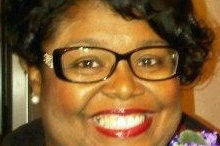
Cheryl Swanier is being honored as a Champion of Change for her work to expand opportunities for young learners from communities historically underserved or underrepresented in tech fields.
As a computer scientist and an educator, I am not here just to teach but to be innovative, creative, and to make a difference in the lives of the students that I serve. I am honored to be invited to the White House with others from across the nation who are increasing public engagement, particularly in technology. At Fort Valley State University (FVSU), one of my goals is to recruit and retain minorities and girls in computing. My goal as an educator is not just to lecture, but also to inspire enthusiasm, get students to actively participate in their education, and facilitate their learning with proper educational scaffolding. I believe that with adequate support almost any student who really applies himself or herself can be successful.
I have always wanted to make a difference in the world, particularly Computer Science. As a computer scientist, I help shape the future by stimulating the minds of the workforce of tomorrow and by collaborating with many programs focused on increasing the computing pipeline and getting students interested in STEM disciplines and future technology careers. For the past five years, I have tirelessly worked with outreach initiatives sponsored by the National Science Foundation to broaden participation in computing (BPC) and to improve computer science education at all levels. One of these initiatives is the ARTSI Alliance (Advancing Robotics, Technology for Societal Impact), which enabled me to establish the first robotics lab at Fort Valley State University. The robotics programming is implemented in Tekkotsu, a robotics application framework in conjunction with Dr. Dave Touretzky at Carnegie Mellon University. Another initiative is the STARS Alliance (Students & Technology in Academia, Research & Service), a regional partnership among academia, industry, K-12 and the community to strengthen local BPC programs by focusing on K-12 outreach, community service, student leadership and computing diversity research. Other BPC initiatives that I have collaborated with include African-American Researchers in Computing Science (AARCS), which aims to increase the number of African-Americans at the levels of tenure track faculty and research scientist in the computing sciences, and the Alliance for the Advancement of African-American Researchers in Computing (A4RC), an alliance to increase the number of African-American recipients of advanced degrees in computing, particularly, at the Ph.D. level.
I am also actively affiliated with professional organizations such as the National Council of Women in Technology (NCWIT) Academic Alliance and the NCWIT Pacesetters. Consequently, I provide mentoring to undergraduate students and ascertain strategies that would increase the number of underrepresented minorities and women in computing. I facilitate presentations to provide undergraduates with opportunities to gain information on research experiences, internships and on exploring the graduate experience. As a result of my mentoring activities, I have students who are pursuing PhDs in computer science, working in Corporate America and governmental agencies. In 2013, I was honored to receive the Undergraduate Research Mentoring Award from NCWIT for excellence in mentoring undergraduate women in computing science.
I also advise the undergraduate chapter of the FVSU Association of Computing Machinery (ACM), and I actively encourage community service. Every semester, my students and I are tutoring local middle school students in mathematics and providing workshops to teach middle and high school students how to write code using a visual programming language, to develop websites as well as how to program robots. In addition, the FVSU ACM hosts a Distinguished Lecture Series where computer scientists from both academia and industry are invited to FVSU to inspire our students by sharing their experiences and expertise. I also chair the annual Research Day Program at my institution, which showcases the research of faculty and students via poster sessions and oral presentations.
I partner with organizations such as Girls Inc., Delta Sigma Theta Sorority, Inc. Dr. Betty Shabazz Delta Academy and Dr. Jeanne L. Noble Delta GEMS, and Links, Inc. in a concerted effort to broaden participation in computing for underrepresented minorities and girls. In 2012, I was honored to receive the Special Recognition Award for the STEM outreach activities that I provide for Girls Inc., an organization that inspires all girls to be Strong, Smart, and Bold. These workshops include teaching girls from K-12 how to learn visual programming languages, develop websites, and program robots.
As a college professor, I have been given the means and opportunity to reach many young adults, by teaching and nurturing their talent. I am a living affirmation that your dreams and goals are attainable. In addition to teaching, I believe that mentoring is very valuable for a student’s success. In computer science and engineering programs, there are proportionately fewer women and minorities in these areas, and I will continue to contribute to ongoing efforts of building support networks to recruit and improve the success rate of these students. During all of my computer science studies, I can only remember one woman that I had as an instructor, which at times was discouraging. So I invite you to sit with me as I continue my endeavors in broadening participation in computing.
Cheryl Swanier is the Associate Professor in For Valley State University’s Department of Mathematics and Computer Science.
Learn more about Technology
- &lsaquo previous
- …
- 47
- 48
- 49
- 50
- 51
- 52
- 53
- 54
- 55
- …
- next &rsaquo

